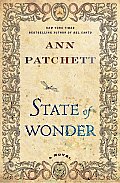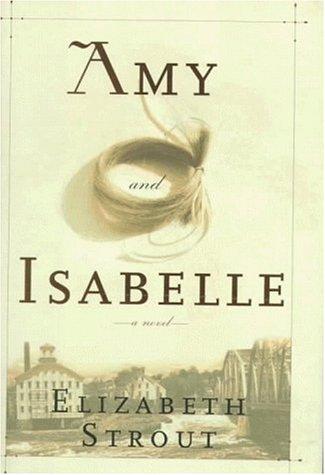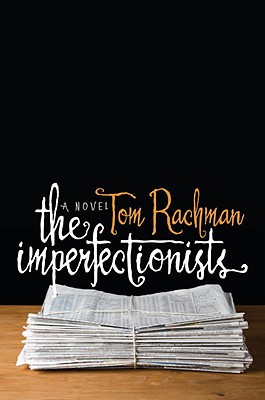Discussion Leader: Jane Shapiro
View the Readers' Packet prepared by H-WPL's Staff
Reserve your copy of Nemesis by Philip Roth on the ALISCat website.
- BookList:
- /* Starred Review */ The fourth in the great and undiminished Roth’s recent cycle of short novels follows Everyman (2006), Indignation (2008), and The Humbug (2009), and as exceptional as those novels are, this latest in the series far exceeds its predecessors in both emotion and intellect. In general terms, the novel is a staggering visit to a time and place when a monumental health crisis dominated the way people led their day-to-day lives. Newark, New Jersey, in the early 1940s (a common setting for this author) experienced, as the war in Europe was looking better for the Allies, a scare as deadly as warfare. The city has been hit by an epidemic of polio. Of course, at that time, how the disease spread and its cure were unknown. The city is in a panic, with residents so suspicious of other individuals and ethnic groups that emotions quickly escalate into hostility and even rage. Our hero, and he proves truly heroic, is Bucky Canter, playground director in the Jewish neighborhood of Newark. As the summer progresses, Bucky sees more and more of his teenage charges succumb to the disease. When an opportunity presents itself to leave the city for work in a Catskills summer camp, Bucky is torn between personal safety and personal duty. What happens is heartbreaking, but the joy of having met Bucky redeems any residual sadness. -- Hooper, Brad (Reviewed 07-01-2010) (Booklist, vol 106, number 21, p8)
- Publishers Weekly:
- Roth continues his string of small, anti–Horatio Alger novels (The Humbling; etc.) with this underwhelming account of Bucky Cantor, the young playground director of the Chancellor Avenue playground in 1944 Newark. When a polio outbreak ravages the kids at the playground, Bucky, a hero to the boys, becomes spooked and gives in to the wishes of his fiancée, who wants him to take a job at the Pocono summer camp where she works. But this being a Roth novel, Bucky can't hide from his fate. Fast-forward to 1971, when Arnie Mesnikoff, the subtle narrator and one of the boys from Chancellor, runs into Bucky, now a shambles, and hears the rest of his story of piercing if needless guilt, bad luck, and poor decisions. Unfortunately, Bucky's too simple a character to drive the novel, and the traits that make him a good playground director--not very bright, quite polite, beloved, straight thinking--make him a lackluster protagonist. For Roth, it's surprisingly timid. (Oct.) --Staff (Reviewed August 2, 2010) (Publishers Weekly, vol 257, issue 30, p)
- Library Journal:
- /* Starred Review */ During the summer of 1944, young men like Bucky Cantor needed good reason not to be fighting overseas. Though he had bad eyesight, was the sole support of his grandmother, and was the best phys ed teacher Newark's Chancellor Avenue School ever saw, Bucky's guilt informed his life that long, hot summer and forever changed its trajectory. With an incredible eye for historical detail, Roth paints a vivid picture of the polio epidemic that hit the Jewish neighborhood of Weequahic on the Fourth of July weekend, pitting ignorance against science, neighbor against neighbor, and fear against common sense. Bucky excels at his job, keeping the kids active and naively believing that he can personally hold the disease at bay. But as one child after another falls ill, he loses faith in God even as he obsesses over the chance to join his girlfriend, Marcia, in the Poconos. VERDICT Roth, one of our greatest American writers, is unrivaled in his mastery at evoking mid-20th-century New Jersey, but it's the thoughtful examination of the toll guilt takes on the psyche, the futility of raging against God or Fate, and the danger of turning blame inward that give this short novel its power. [See Prepub Alert, LJ 5/15/10.]— Sally Bissell, Lee Cty. Lib., Ft. Myers, FL --Sally Bissell (Reviewed August 1, 2010) (Library Journal, vol 135, issue 13, p74)
- Kirkus:
- /* Starred Review */ For those who monitor the growing list of books by Philip Roth, his forthcoming, Nemesis, presents a revelation as startling as the discovery of a planet or the alignment of a new constellation.The top of the list remains reassuringly familiar: "Zuckerman Books" (those featuring Nathan Zuckerman, Roth's alter ego), "Roth Books" (another alter ego, "Philip Roth," in a category that includes fiction and nonfiction alike) and "Kepesh Books" (another serial protagonist who may or may not be an alter ego).But then there is an emergent category: "Nemeses: Short Fiction," which encompasses four recent novels, including the new one. What this means to the ardent Roth reader is that three works previously considered unrelated—Everyman (2006), Indignation (2008) and The Humbling (2009), formerly scattered at the list's bottom with some of his earliest efforts as "Other Books," are now connected. And Nemesis provides the key to that connection.A little longer than the other three, Nemesis could be the darkest novel Roth has written and ranks with the most provocative. It's a parable of innocence lost in the author's native Newark, where polio threatens a neighborhood that is already sacrificing young men to World War II. The protagonist is Bucky Cantor, a 23-year-old playground director, who has seen his best friends enlist in the war while he was rejected for poor eyesight.Instead, "Mr. Cantor" (as his charges call him) finds himself facing a more insidious enemy. "No medicine existed to treat the disease and no vaccine to produce immunity...(it) could befall anyone, for no apparent reason," writes Roth. It arrives without warning, and it changes everything. If anything, it was scarier than cancer or AIDS is now.Narrating the story is one of polio's victims, though he barely emerges as a character until the novel's epiphany. Until then, Roth lets the reader wonder how a narrator named only in passing could penetrate the protagonist's mind and relate a series of incidents that the narrator couldn't have witnessed.As Bucky's boys succumb to the disease, temptation lures him from the city to what appears to be a safe oasis, an idyllic summer camp where his girlfriend works. Yet his conscience (already plagued by his 4-F status) pays the price for his escape, an escape that might prove illusory.What is Bucky's nemesis? Maybe polio. Maybe God, "who made the virus," who kills children with "lunatic cruelty." Maybe mortality—death and the decay that precedes it, the ravages of time that distinguish man from God.But maybe Bucky's nemeses include Bucky himself—a layer of meaning that makes this novel something other than another retelling of Job and forces the reader to reconsider the previously published "Nemeses" in fresh light. For it is within these short novels that Roth tackles nothing less than the human condition, which finds its nemesis in the mirror.(Kirkus Reviews, August 15, 2010)
Further Information
- Philip Roth looks back...., Newark Star Ledger, March 18, 2012.
- Philip Roth's interview with Esquire, October 7, 2010
- Benjamin Taylor interviewing Philip Roth, May 2011 (YouTube)
- Rita Braver interviews Philip Roth on CBS News, October 26, 2010
- Leah Hager Cohen's review in The New York Times, October 8, 2012
- Heller McAlpin's review on NPR, October 4, 2010
- Roxana Robinson's review in The Washington Post, October 5, 2010
- Morris Dickstein's review in The Daily Beast, October 2, 2010
- Philip Roth interviews, compiled on The Philip Roth Society web site
- Book Discussion questions: Yiddish Book Center
- Igor Webb: Four Questions about Nemesis answered (The Forward)





